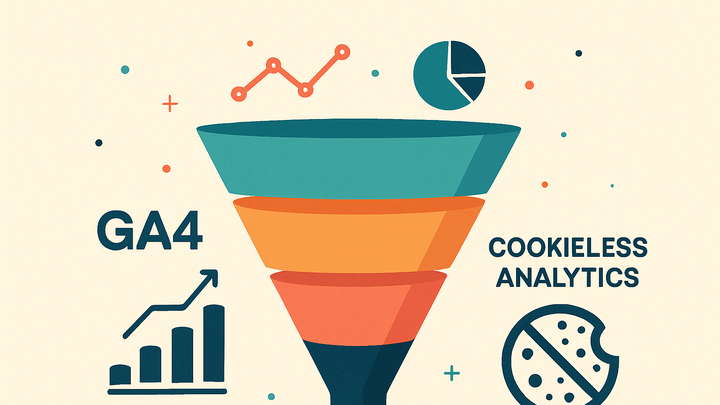Published on 2025-06-22T10:00:24Z
What is a Transitional Funnel? Examples and Implementation
A transitional funnel in analytics is a sequential model that tracks users as they move through a series of intermediate steps on your website or app. Unlike traditional conversion funnels that focus only on entry and final conversion, transitional funnels shine a light on the transitions between non-final events or pages, helping you pinpoint exactly where users deviate from the ideal path.
By analyzing these transition points, you can:
- Identify high-drop-off steps or confusing page flows
- Optimize micro-conversions (e.g., adding to cart, form starts)
- Improve overall user experience and lift final conversion rates
You can implement transitional funnels in tools like Google Analytics 4 (GA4) via the Explore → Funnel Exploration feature, or in PlainSignal, a cookie-free analytics solution, with a lightweight JavaScript snippet. Each approach offers different trade-offs in terms of privacy, complexity, and depth of insights.
Transitional funnel
A sequential analysis model tracking user progress through intermediate steps, revealing transition points and drop-offs.
Understanding Transitional Funnels
This section defines the concept of a transitional funnel, explains its purpose, and highlights key benefits.
-
Definition of transitional funnel
A transitional funnel maps the step-by-step progression of users through predefined events or pages, focusing on the points between entry and conversion rather than just the endpoints.
-
Purpose and use cases
Transitional funnels help teams uncover friction at intermediate steps—such as adding items to cart or beginning a form—and optimize micro-conversions to boost overall conversion rates.
-
Benefits of analysis
By examining transitions rather than only final outcomes, you can:
- Reduce abandonment at critical touchpoints
- Personalize user flows based on drop-off data
- Validate A/B tests on granular steps
- Reduce abandonment at critical touchpoints
Components of a Transitional Funnel
Break down the stages and metrics that make up a transitional funnel.
-
Entry stage
The first event or pageview where users enter the funnel sequence.
-
User acquisition
Channels like organic search, paid ads, or referrals that drive users into the funnel.
-
-
Transition steps
Intermediate events or pages that represent progress toward the conversion goal.
-
Event tracking
Each step must correspond to a tracked event (e.g.,
add_to_cart,begin_checkout). -
Sequence definition
Clearly define the required order of events to form the funnel path.
-
-
Exit stage
The final conversion event or a drop-off point where users leave the funnel.
-
Conversion
Desired end action, such as
purchaseorsignup. -
Abandonment
Users who exit before completing the final step.
-
Implementing Transitional Funnels with Analytics Tools
Step-by-step guidance for setting up transitional funnels in GA4 and PlainSignal.
-
Google analytics 4 (GA4)
Use the Funnel Exploration report in GA4 to build and visualize transitional funnels without advanced tagging.
-
Configuration
Navigate to Explore → Funnel exploration, then add ordered steps based on events or pageviews.
-
Example
Define steps like
page_view→add_to_cart→purchaseto see drop-off rates at each transition.
-
-
PlainSignal (cookie-free analytics)
PlainSignal lets you capture events and build funnels without cookies via a small client script.
-
Installation
Add the following snippet to your HTML:
<link rel="preconnect" href="//eu.plainsignal.com/" crossorigin /> <script defer data-do="yourwebsitedomain.com" data-id="0GQV1xmtzQQ" data-api="//eu.plainsignal.com" src="//cdn.plainsignal.com/plainsignal-min.js"></script> -
Event tracking
After initialization, use the PlainSignal API to record steps like
start_trial,checkout_step, andcomplete_purchase.
-
Best Practices and Common Pitfalls
Guidelines to ensure accurate, actionable funnel analysis and mistakes to avoid.
-
Best practices
Optimize your transitional funnels for clarity and reliability.
-
Define clear steps
Ensure each funnel stage maps to a single, measurable event or pageview.
-
Segment analysis
Drill down by user attributes, traffic source, or device to uncover hidden patterns.
-
-
Common pitfalls
Watch out for these errors when building your funnels.
-
Incomplete tracking
Missing or misconfigured tags can lead to gaps in the funnel data.
-
Ignoring null values
Untracked or anonymous users may skew drop-off percentages if not accounted for.
-
